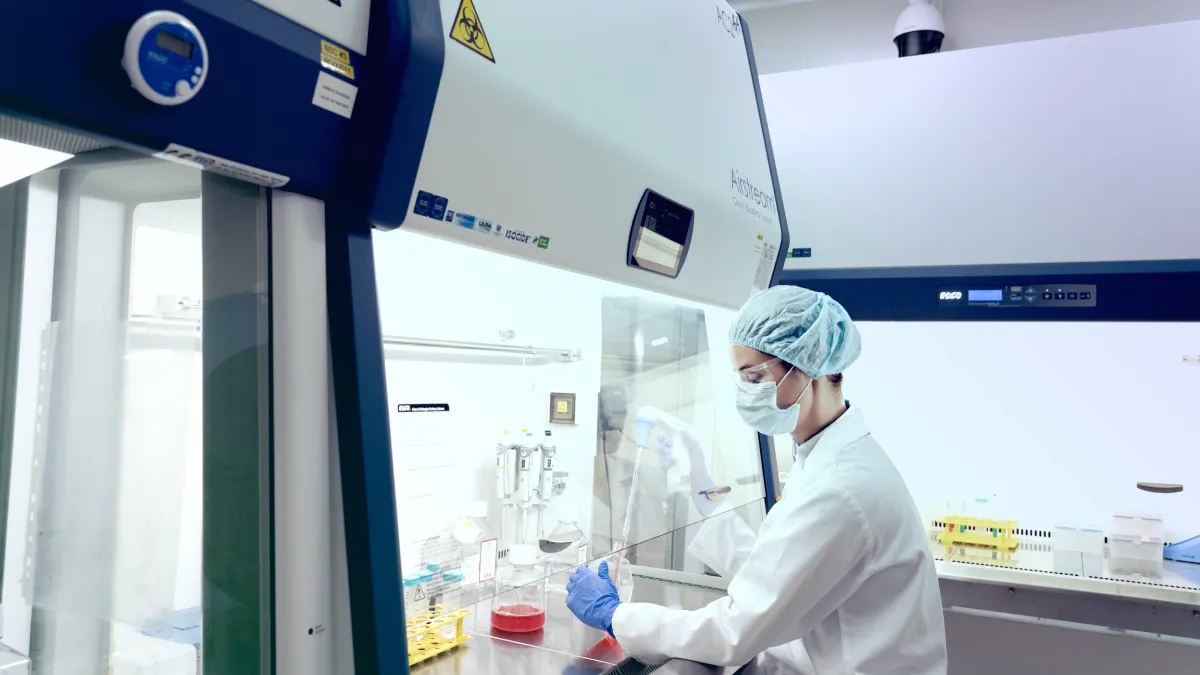Cervical cancer is the second most common causes of cancer death in the world especially in Southeast Asia. It is frequently diagnosed in women between the ages of 35 and 44. According to International Association of Cancer Registries, about 13, 240 new cases of invasive cervical cancer will be diagnosed and about 2, 170 women will die from cervical cancer this year. Moreover, it rarely develops in women younger than 20 while more than 15% of cases of cervical cancer are found in women over 65.
Cervical cancer starts upon the abnormal cell growth in the lining of the cervix. The cervix has two different parts. It is covered by two different types of cells: the glandular cells that cover the endocervix - the part of the cervix closest to the body of the uterus; and the squamous cells that covers ectocervix - the part next to the vagina. These two cell types meet at a place called the transformation zone. The exact location of the transformation zone changes on a later age or after gestation. Most cervical cancers begin in cells within transformation zone. These cells do not automatically become cancerous, rather they first undergo modifications that turn them into one.
Squamous cell carcinoma and adenocarcinoma are the two types of cervical cancer. However, squamous cell carcinoma is the most common type of cervical cancer prevalent in South-East Asia.
Cervical cancer is a sexually transmitted disease caused by certain types of Human papillomavirus (HPV). Currently, there are more than 100 types of HPV, of which at least 16 are high risk to cause cervical cancer.
The prognosis of this disease has already improved along with the treatment, and the survival rate increases. Vaccines have been developed to prevent infection from the types of HPV types that cause associated with cervical cancer. Some experimental vaccines are also being studied for women with established HPV infections, to help their immune systems destroy the virus and cure the infection before cancer develops.
Moreover, therapeutic vaccines are designed to trigger cell-mediated immune responses for the treatment of established infections and malignancies. HPVs encode two major oncoproteins, E6 and E7, which are consistently expressed in cervical carcinomas. E6 and E7 lack intrinsic enzymatic activities and transform cells by stimulating cell growth and inactivating tumor suppressor pathways.
Expression of HPV-16 E6 and E7 oncoproteins in primary human epithelial cells causes genomic instability. The E6 and E7 early genes are ideal targets for vaccine therapy due to their role in disruption of the cell cycle and their constitutive expression in premalignant and malignant tissues.
Human papillomavirus (HPV) vaccine is a vaccine that prevent HPV infection (for types 16 and 18), which causes about 70% of cervical cancer cases. HPV vaccine also contains Adjuvant System 04 (AS04), a compound that has been found to boost the immune system response for a longer period of time. It is created using L1 protein in the form of non-infectious virus-like particles (VLPs) produced by recombinant DNA technology. It uses Hi-5 Rix4446 cells derived from the insect Trichoplusiani to produce HPV vaccine at high density and further proliferated using a bioreactor.
Commercially available, Esco VacciXcell CelCradle™ bioreactor is the most advanced bioreactor that can produce the targeted secreted products to manufacture vaccines. It is designed based on the concept of bellow-induced intermittent flow of media and air through porous matrices (BioNOC™ II) where cells reside. With the use of Tide Motion principle, the gentle vertical oscillation of culture medium and air provides cells an environment that is low shear stress to avoid cell damage or cell death. Hi-5 Rix4446 cell cultures require high aeration and nutrition levels to reproduce and perform effectively. This efficient nutrient and oxygen transfer is what allows the tide motion system to produce high-density cell yield.
As mentioned above, BioNOC™ II provides high rate exposure of cells to aeration and culture medium because of its high porosity. It is also favorable for vaccine production because of its low fiber release that results to lower downstream processing costs.
Due to high demand vaccination for cervical cancer, this vaccine must be produced in large amounts. Esco VacciXcell TideCell® is the world’s largest linearly scalable single-use bioreactor, from seed preparation to 5000 liters with closed automated cell harvesting. It is the pilot/production scale system of Esco VacciXcell’s Tide Motion Bioreactors which is perfect for the mass production of Cervarix.
References:
EscoVacciXcell
21 Changi South Street 1
Singapore 486777
T: +65 6542 0833
About Cervical Cancer
Cervical cancer starts in the cervix, the narrow opening into the uterus from the vagina. The normal “ectocervix” (the portion of the uterus extending into the vagina) is a healthy pink color and is covered with flat, thin cells called squamous cells. The “endocervix” or cervical canal is made up of another kind of cell called columnar cells. The area where these cells meet is called the “transformation zone” (T-zone) and is the most likely location for abnormal or precancerous cells to develop.
Reference: National Cervical Cancer Coalition. http://www.nccc-online.org/hpvcervical-cancer/cervical-cancer-overview/
About Tide Motion Bioreactors
Tide Motion pertains to the gentle oscillation of culture medium into and out of the matrix vessel that intermittently exposes the cells to aeration and nutrition. The upward oscillation exposes the cells to nutrition, while the downward oscillation exposes the cells to aeration. At the same time, this process washes away products and wastes. This oscillation produces no air bubbles and low shear stress. View a range of products at http://www.vaccixcell.com/tide-technology/
About Esco VacciXcell
Esco VacciXcell is the bioprocessing division of Esco Group of Companies that specializes in the marketing and manufacturing of bioprocessing equipment for cell culture.
Esco VacciXcell provides turnkey manufacturing solutions using its proprietary Tide Motion™ technology to help developing nations to be self-sufficient in the manufacturing, storing, distribution, and administration of vaccines and other biologics, thus providing a complete solution from Discovery to Delivery. For more information on VacciXcell, please visit www.vaccixcell.com.
Sign up to our newsletter and receive the latest news and updates about our products!
